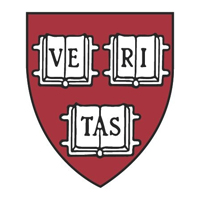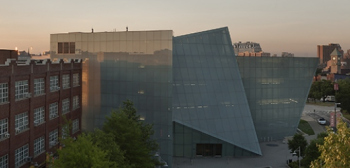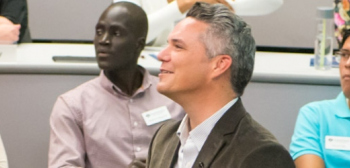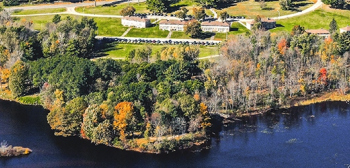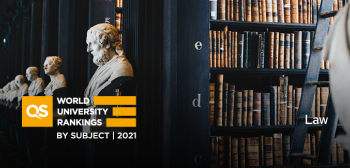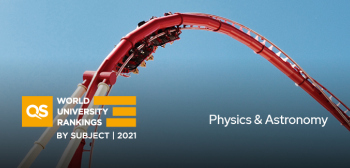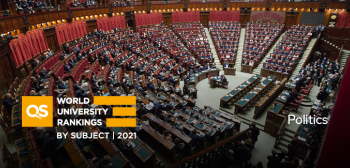- #5 QS Global World Ranking
- Private not for ProfitStatus
- Very HighResearch Output
- 23,936Total Students
- 4,456Faculty
- 6,021Int'l Students
The University’s position in the current QS World University Rankings.
Whether the University is funded by the government of that country or state, or funded by private donations.
The research intensity of the University, based on the number of papers output relative to the University’s size.
The number of full time equivalent students enrolled at the University.
The number of full time equivalent teaching staff employed by the University.
The number of full time equivalent international students enrolled at the University.
Harvard University
About
Harvard’s Graduate School of Arts and Sciences (GSAS) was formed in 1872 and is responsible for the majority of Harvard's post-baccalaureate degree programs in the humanities, social sciences, and natural sciences. It offers Master of Arts, Master of Science, and Doctor of Philosophy (PhD) degrees in around 56 disciplines.
GSAS is renowned throughout the United States and the world. In addition to scholars and scientists, GSAS graduates have become prominent US politicians, Supreme Court judges, foreign heads of state and heads of government.
There are approximately 4,250 students enrolled in Harvard's Graduate School of Arts and Sciences, with around 200 taking master's programs, and the rest pursuing PhDs.
As of 2016, 46 percent of GSAS students were women, 30 percent were international students, and 12 percent were underrepresented minorities.
Around a fifth of GSAS students pursue degrees in humanities, while a quarter opt for social sciences, and over half of graduate students study natural sciences. Students pursuing doctoral studies can take graduate courses in a secondary field, and GSAS also enables PhD candidates to coordinate their studies for an additional advanced degree.
The application process is relatively simple, though may vary according to subject. Generally, candidates complete an online application form and pay a fee of $105.
Documents to upload in support of an application include university transcripts, letters of recommendation, a statement of purpose, and GRE test scores. International students whose first language isn’t English may have to demonstrate their language proficiency by taking a test such as the TOEFL or IELTS.
All GSAS students are charged tuition in a tiered structure that reduces as they progress. Full tuition, required for the first two years of study, costs $44,816 per year, then for the third and fourth years it’s $11,654 a year. In addition, a ten-month living expense budget works out at around $41,000.
However, PhD candidates needn’t reach for their calculators, as Harvard guarantees them full financial support for a minimum of five years, with a funding package that includes tuition grants, stipends, traineeships, teaching fellowships, research assistantships, and other academic appointments.
Master’s programs are not fully funded, and students should expect to contribute significantly, although there is a limited amount of grant support and research funding available.
About
Harvard’s Graduate School of Arts and Sciences (GSAS) was formed in 1872 and is responsible for the majority of Harvard's post-baccalaureate degree programs in the humanities, social sciences, and natural sciences. It offers Master of Arts, Master of Science, and Doctor of Philosophy (PhD) degrees in around 56 disciplines.
GSAS is renowned throughout the United States and the world. In addition to scholars and scientists, GSAS graduates have become prominent US politicians, Supreme Court judges, foreign heads of state and heads of government.
There are approximately 4,250 students enrolled in Harvard's Graduate School of Arts and Sciences, with around 200 taking master's programs, and the rest pursuing PhDs.
As of 2016, 46 percent of GSAS students were women, 30 percent were international students, and 12 percent were underrepresented minorities.
Around a fifth of GSAS students pursue degrees in humanities, while a quarter opt for social sciences, and over half of graduate students study natural sciences. Students pursuing doctoral studies can take graduate courses in a secondary field, and GSAS also enables PhD candidates to coordinate their studies for an additional advanced degree.
The application process is relatively simple, though may vary according to subject. Generally, candidates complete an online application form and pay a fee of $105.
Documents to upload in support of an application include university transcripts, letters of recommendation, a statement of purpose, and GRE test scores. International students whose first language isn’t English may have to demonstrate their language proficiency by taking a test such as the TOEFL or IELTS.
All GSAS students are charged tuition in a tiered structure that reduces as they progress. Full tuition, required for the first two years of study, costs $44,816 per year, then for the third and fourth years it’s $11,654 a year. In addition, a ten-month living expense budget works out at around $41,000.
However, PhD candidates needn’t reach for their calculators, as Harvard guarantees them full financial support for a minimum of five years, with a funding package that includes tuition grants, stipends, traineeships, teaching fellowships, research assistantships, and other academic appointments.
Master’s programs are not fully funded, and students should expect to contribute significantly, although there is a limited amount of grant support and research funding available.
University highlights
- 2012#3
- 2014#2
- 2015#4
- 2016#2
- 2017#3
- 2018#3
- 2019#3
- 2020#3
- 2021#3
- 2022#5
- 2023#5
- 2024#4
- 2025#4
- 2026#5
Campus locations
Harvard University,
1350 Massachusetts Avenue , Cambridge , Massachusetts , United States , 02138
651 Huntington Avenue,
651 Huntington Avenue , Boston , Massachusetts , United States , 2115
324 North Main Street,
324 North Main Street , Petersham , Massachusetts , United States , 1366
Similar Universities
Seton Hall University
400 S Orange Ave, South Orange, South Orange
George Washington University School of Business
George Washington University, Washington D.C.
Savannah College of Art and Design
516 Drayton St, Savannah
Maryland Institute College of Art
1300 W. Mount Royal Avenue, Baltimore
Temple University
1801 North Broad Street, Philadelphia
651-700 QS World University Rankings 5 QS starsASU - Thunderbird School of Global Management
400 E Van Buren, Phoenix
Test preparations
Featured University


-
10 UG & 47 PGTotal courses
-
Private for ProfitStatus
-
HighResearch output
